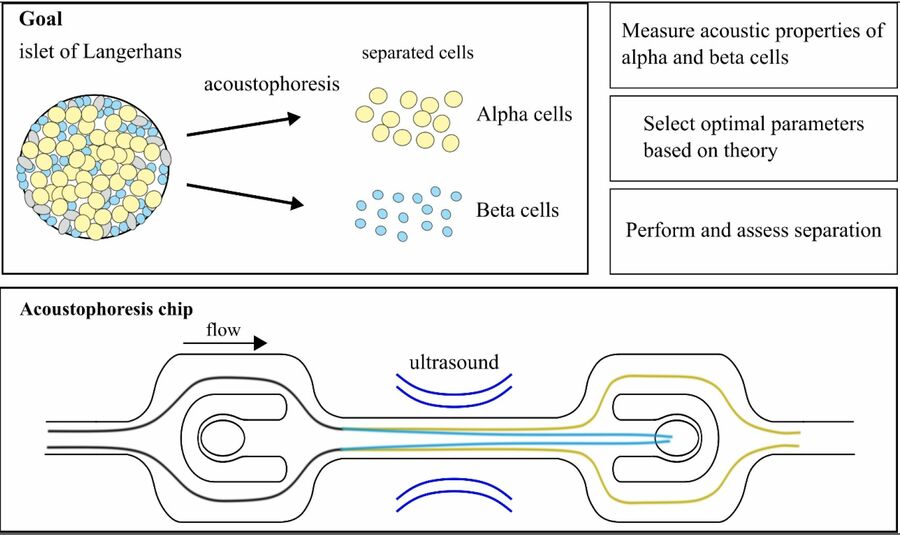Acoustic separation of pancreatic Alpha from Beta cells
Diabetes affects over 420 million people worldwide. The pancreatic alpha and beta cells play a major role for the regulation of blood glucose and the development of type 2 diabetes. The goal of the master’s thesis project is to separate dissociated mouse alpha and beta cells from each other using acoustophoresis (as summarized in our Fig. 1 below) to enable studies of their individual behavior. Acoustic separation has been applied to separate leukocytes from blood [1], and separate leukocyte subpopulations [2]. As the acoustic properties of the surrounding buffer medium have a strong impact on the acoustic separation performance, the buffer will be optimized. To this aim, the acoustophoretic mobility of the cells will be measured in reference to each other or polystyrene particles under different buffer conditions. Then, the separation will be performed in the optimal buffer. The separation performance will be assessed by fluorescence activated cell sorting (FACS). The project is an experimental study and involves cell handling (staining, culturing) and running a lab-on-a-chip system.
Interested?
Contact Thierry Baasch (Thierry.Baasch@bme.lth.se), Andreas Lenshof (Andreas.Lenshof@bme.lth.se), or Thomas Laurell (Thomas.Laurell@bme.lth.se).

Figure 1. The goal of the project is to separate dissociated pancreatic alpha and beta cells
using acoustophoresis. The pre-focused cells are separated into their subspecies by ultrasound
in our microfabricated acoustic separation lab-on-a-chip device.
Figure 2. Photograph of the acoustphoretic cell separation chip. The cels enter through the
pre-focusing channel and get acoustically separated in the main channel. If separation is
successful, the two cell species will exit via different outlets.
[1] Urbansky, Anke, et al. "Rapid and effective enrichment of mononuclear cells from blood using acoustophoresis." Scientific reports 7.1 (2017): 1-9.
[2] Urbansky, Anke, et al. "Label-free separation of leukocyte subpopulations using high throughput multiplex acoustophoresis." Lab on a Chip 19.8 (2019): 1406-1416.
